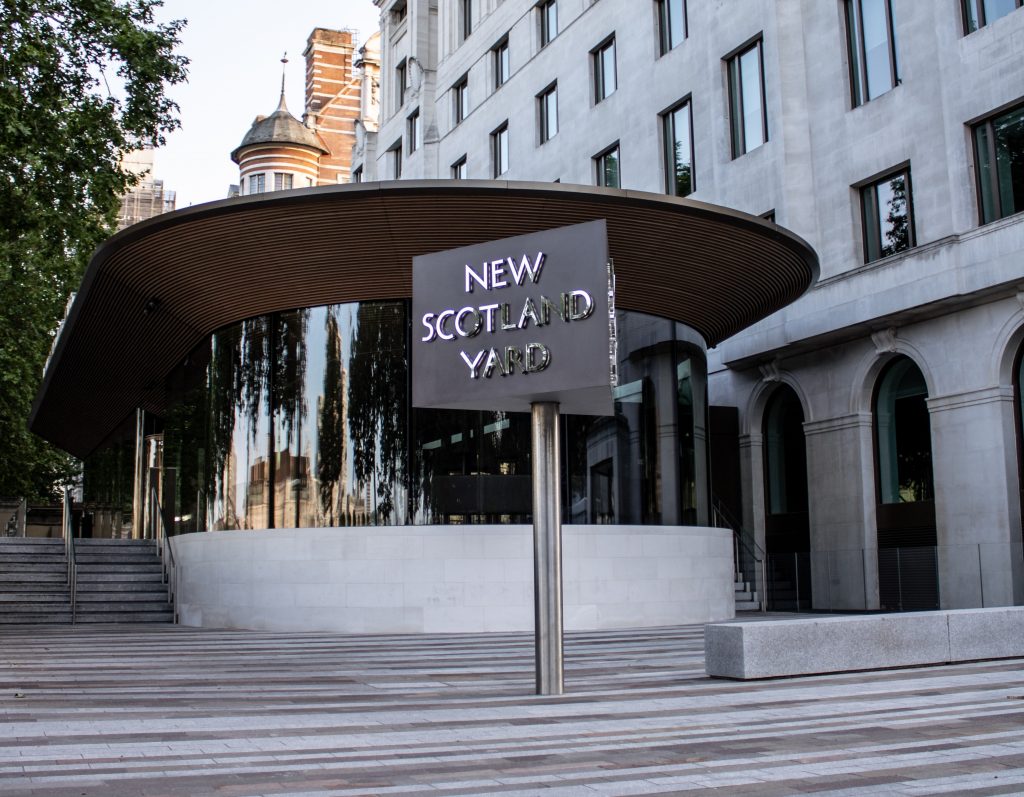Met expands use of crime data to focus on most serious criminals

The Metropolitan police is expanding its use of “precision policing”, an approach that uses crime data to focus police activity, in an effort to remove some of the most serious criminals from the streets.
The move builds on the Met’s strategy to identify the 100 most dangerous men in London. It will create a more powerful offender forecasting tool and broaden the range of crimes the force targets through data analysis.
The strategy is overseen by the Met’s chief scientific officer, Prof Lawrence Sherman, and ranks suspects named in crime reports according to the recommended prison time they would serve if convicted. Often, suspects are named by victims or witnesses who later withdraw cooperation out of fear of reprisals.
Police reports from the 365 days to 5 June this year named nearly 36,000 suspects in crimes that ranged from stalking and coercive control to domestic abuse, rape and murder. Many suspects were linked to the less serious crimes: if convicted, half could expect only 11 days or fewer in prison.
But a small proportion were responsible for extreme harm: on average, the top 100 were suspected of four crimes each, rapes and murders included, and in total would face more than 1,300 years in jail if convicted.
The ranking is recalculated each week and used by the Met to focus investigations, for example through surveillance or revisiting victims and witnesses to explain the importance of providing witness statements.
A pilot trial of precision stop and search is already under way in Lambeth and in Barking and Dagenham, two London wards with some of the highest knife crime in the city. The intention is to maximise the number of blades confiscated and reduce the wave of knife robberies and stabbings.
Charities said they wanted evidence to prove the approach lessened the huge racial disparities in stop and search.
Habib Kadiri at StopWatch, a charity that works to promote accountable policing, said: “Notwithstanding the fact that the majority of searches conducted are for drugs and mostly find nothing of note, we are interested to see what a precision approach yields that significantly improves outcomes in terms of reducing both violence and the suffering of those harassed by repeated instances of police profiling, particularly of a racial nature.”
The Met made its first arrest last month after ranking the 100 most dangerous men in London suspected of violence against women and girls (VAWG). The man is charged with serious offences against multiple victims and is due to appear in court this week.
Given promising results so far, a similar approach is now being considered for male-on-male crime and the worst driving offenders, where accidents lead to serious injuries and deaths on the roads.
A similar number of people are killed in London traffic accidents as are murdered in the capital each year.
So far, the top 100 list has not included serving police officers, Sherman said, but the system would probably not have flagged the former officers Wayne Couzens, who murdered Sarah Everard, or the serial rapist David Carrick, because of the time frame and types of crimes that feed into the rankings.
For the next phase of the Met’s push on precision policing, the force is developing a more powerful forecasting tool. It aims to rank suspects on their entire criminal history over several years, including offences such as indecent exposure which may, as in Couzens’s case, precede future rape and murder.
Further ranking systems are under discussion to target male-on-male violence and other offences.
“Even though we have very high harm for the violence committed against women, there’s less of it than the violence committed against men,” Sherman said.
“So with the re-organising of the proactive resources of the Met, this method is very much on the table.
“We could [also] do it with driving,” he added. “Can we stack dangerous drivers in London in the same way?”
Mike Hough, emeritus professor in law at Birkbeck, University of London, and founder of the Institute for Criminal Policy Research, said focusing enforcement on the most serious and persistent offenders is not new, but applying it to those committing violence against women and girls is.
“It sounds promising, both in terms of likely impact on the persistent offenders who are identified, and in the declaratory effect of recognising that those committing VAWG are involved in serious criminality,” Hough said.
“As with any targeting of particular groups for intensive policing, there are obviously risks in wrongly classifying people as dangerous, and in doing so in ways that lack transparency. The Met’s experience in identifying “gang nominals” is a case in point.”
Source: (The Guardian)

